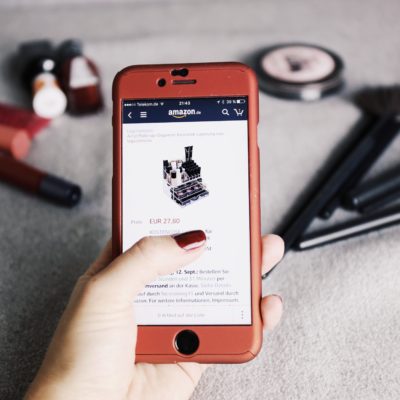With the holiday season in full swing, it’s hard to turn your head without seeing something new to buy. Though it’s easy to justify small impulse purchases here and there, if you’re not paying attention they start to add up quickly. In fact, a 2018 survey found the average American consumer spends a shocking $5,400 per year on impulse buys. If you’d like to keep more of that cash in your pocket, try these eight tips to help control your impulse spending.

Keep Track
Sometimes the reality can be hard to face, but the more you know about your shopping habits the better you can control them. Consider writing down all of your purchases in a journal or use a free app such as Mint that categorizes your spending to provide a snapshot of where your money is going. As you start to notice patterns you can eliminate unnecessary purchases and build a better budget.
Identify Your Triggers
One of the most common causes of compulsive buying is having shopping and emotion intertwined. Whether you treat yourself to a small reward for minor victories or you just get a post-purchase rush, identifying other ways to satiate these feelings can help you control both your emotions and budget. Instead of celebrating a promotion with a shopping spree, invite friends over for some wine and dish about your recent success. If stress is your trigger, try finding an exercise outlet or a trusted friend you can talk with.
Eliminate Easy Access
Who appreciates one-click ordering more: retailers or consumers? While the ease of placing an online order can’t be beat, it provides no time at all to actually ponder your purchase. If you find packages showing up at your front door and can’t even remember what’s inside, they’re most likely not essential items. One way to help eliminate those spur-of-the-moment shopping sprees is to delete credit card information from your account. By the time your grab your wallet and re-enter all of your details, the extra effort should help you realize you’re buying on impulse.
Sleep On It
When you find yourself faced with an impulse buy, it’s important to take a step back and think before you make a decision you’ll regret down the road. At a minimum, give yourself 10 minutes to mull it over. Try visiting another store or walk away from the computer. Chances are if you didn’t really need the item you won’t trek back to the store to complete the purchase. For big-ticket items, give yourself a night to sleep on it, read reviews and scrutinize your finances. If everything adds up and your desire is the same in the morning, you’ll make a more informed buy.
Scrutinize the Sale
There’s a surprising amount of science behind sales. Marketing teams work hard to maximize benefits for retailers while making you think you’re getting an amazing deal. A good rule of thumb to follow is to ask yourself if you’d still buy a sale item at full price. If the answer is no, you can safely move on knowing it wasn’t a necessary purchase.
Carry Cash
Credit cards have their merits when used wisely, but they don’t do much to help you think about the actual value of money. Instead of keeping a credit card handy, try taking a shopping trip with just a $50 or $100 bill.that you’re not only less likely to make impulse buys when you have to break a big bill, you’re also more likely to appreciate your purchase.
Lessen Your Load
Spending isn’t only relative to the size of your savings account — the size of your cart plays an important role as well. Food is the most common impulse buy, and the ever-expanding cart sizes are designed to entice you to fill them up with items you don’t need. Get in the habit of shopping with a basket when you’re at the grocery store. As it starts to fill up, get heavy and space is at a premium, you’re less likely to add items on a whim.
Phantom Shopping
When you can’t pull yourself away from the computer screen, try a little online window shopping to cure the craving to shop. While you may want to avoid signing in to accounts that will make it easy to complete the purchase, go through and fill your cart with everything that catches your eye. When your cart is full and you see the astronomical price tag, close your browser and move on to another activity. Sometimes the simple act of filling up that cart can fulfill the urge to shop.
Save for the things that matter
Without giving up the things you love
Want your family’s financial future to feel safe and secure? Download my Easy Family Budget Worksheet and take control of your family’s finances in just 10 minutes!



